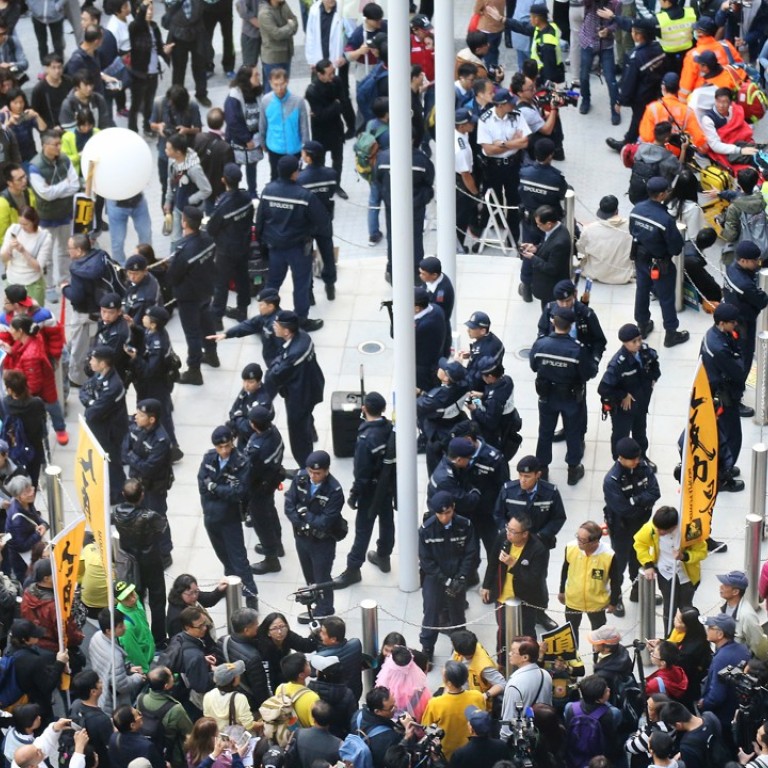
Showdown as police surround Hong Kong protesters at ‘Civic Square’ after New Year’s Day march
Organisers say 10,000 took to the streets in protest against contentious joint checkpoint plan for city’s cross-border rail link to mainland China
A New Year’s Day pro-democracy march by thousands of demonstrators ended in scuffles and a defiant stand-off with police at the newly reopened “Civic Square” protest site outside Hong Kong’s government headquarters.
Organisers said 10,000 took to the streets on Monday to voice their concerns over what they see as campaign by Beijing to reduce Hong Kong’s autonomy through a series of contentious moves. Police put the rally turnout at a more conservative 6,200.
The protesters made their way from Wan Chai to the government compound in nearby Admiralty, where the otherwise peaceful march became unruly as police officers surrounded demonstrators outside the East Wing Forecourt, popularly known as “Civic Square”.
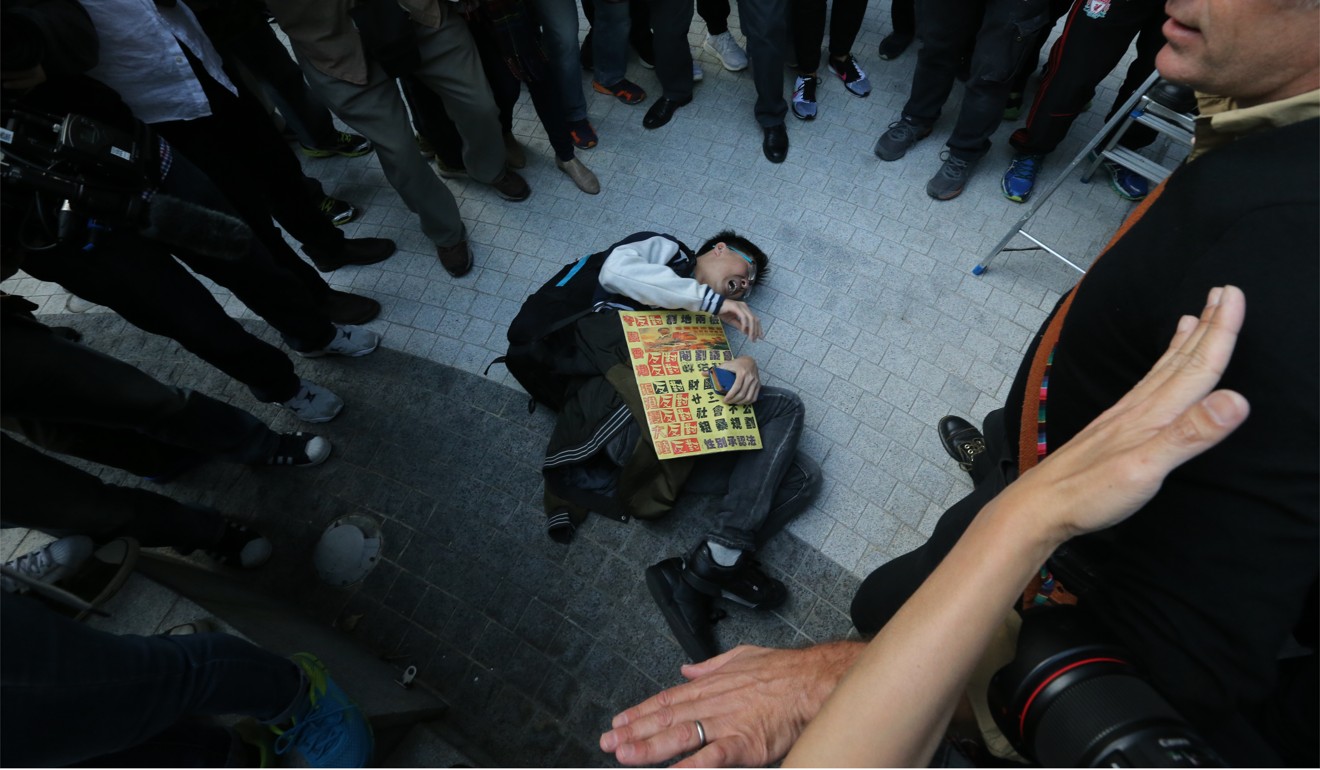
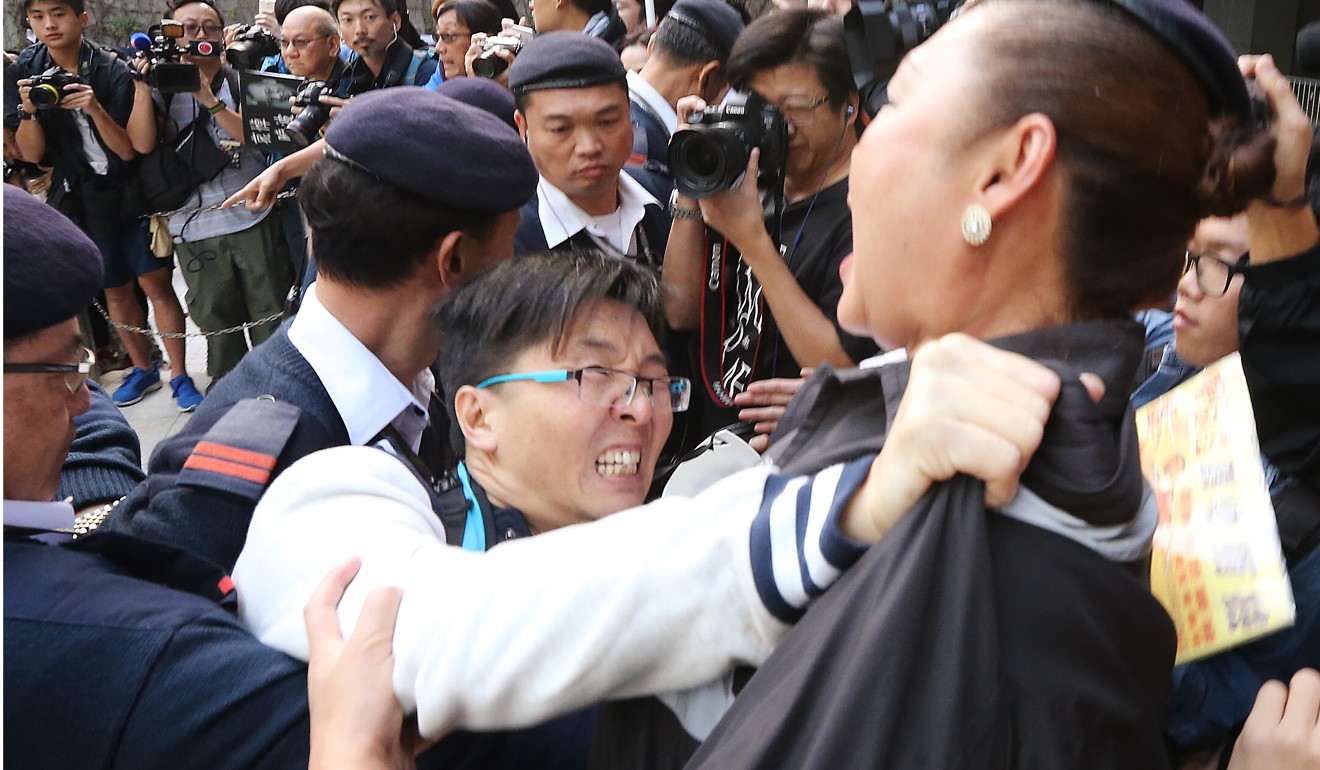
“Protect Hong Kong,” the protesters chanted as they stopped on Tim Mei Avenue outside the square on Monday before about 200 of them went in. They had been permitted to use the area until 6.30pm.
Scuffles broke out when some diehard protesters made their way up to an elevated platform flying the national and Hong Kong flags. Security guards tried to chase them off, and one protester had to be carried away on a stretcher.
At least three persons, including two security guards, were said to have felt unwell after the clash at the platform and were sent away by ambulance. By 9pm, a police spokesman said it did not have information about reports of injuries during the march and subsequent rally.
Before the start of the march, a 56-year-old man was arrested by police outside No 22 East Point Road for allegedly having damaged a protest banner. Police classified it a case of “criminal damage”.
Hong Kong’s No 2 official defends decision to limit access to ‘Civic Square’ where protests are allowed only on specific days
The scene was reminiscent of the original protest that set off 79 days of road blockades in 2014, with dozens of police officers surrounding the platform to prevent more demonstrators from climbing onto it. But the officers and security guards dispersed after about half an hour, allowing protesters to freely plant themselves on the stage.
At about midnight Tuesday, only four protesters remained, and security guards moved in. Three protesters left without incident, and the fourth had to be carried out.
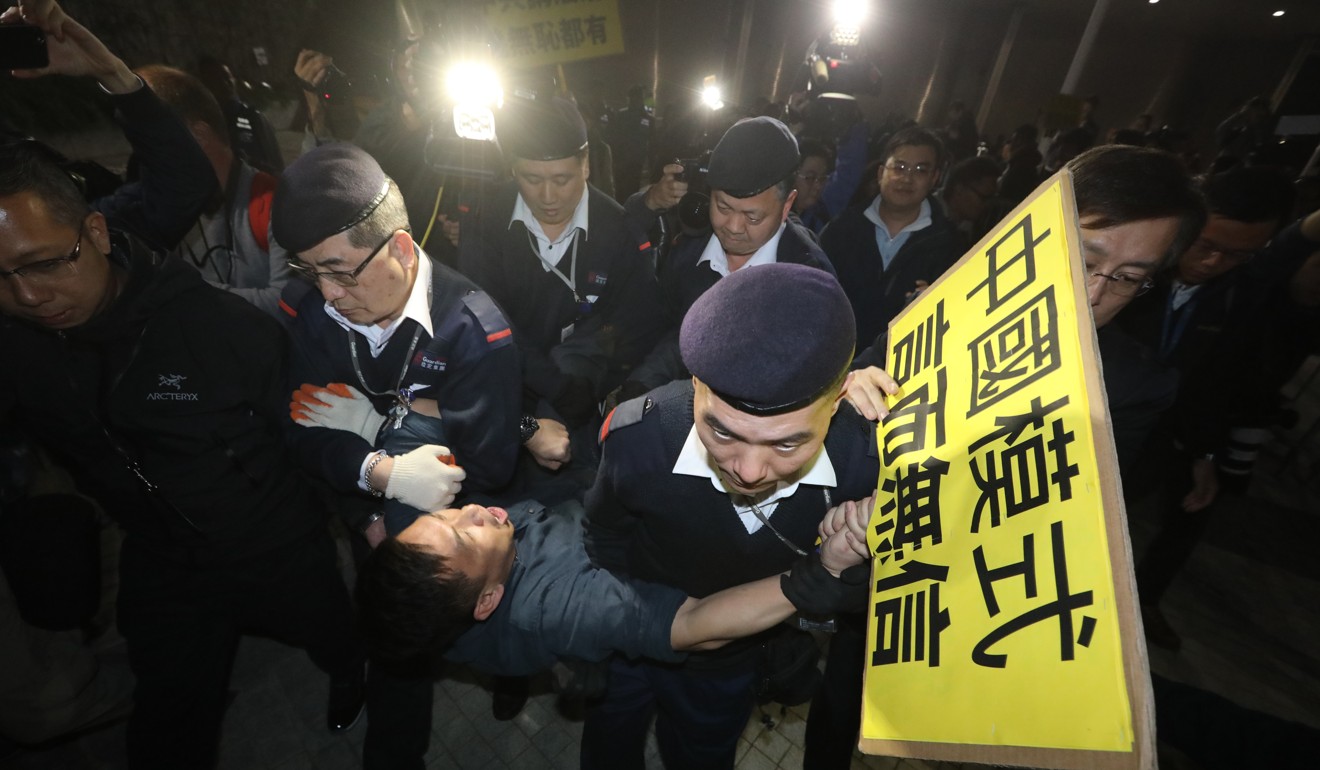
The main theme of the rally, organised by the Civil Human Rights Front, was opposition to last week’s formal endorsement by China’s top legislative body of a controversial plan to set up a joint checkpoint at the West Kowloon station of a high-speed rail link that will connect Hong Kong with Shenzhen and Guangzhou.
Critics of the so-called co-location arrangement fear it will undermine the city’s autonomy by allowing officials from across the border to enforce mainland Chinese laws for the first time on Hong Kong soil – specifically over a zone leased to them at the terminal.
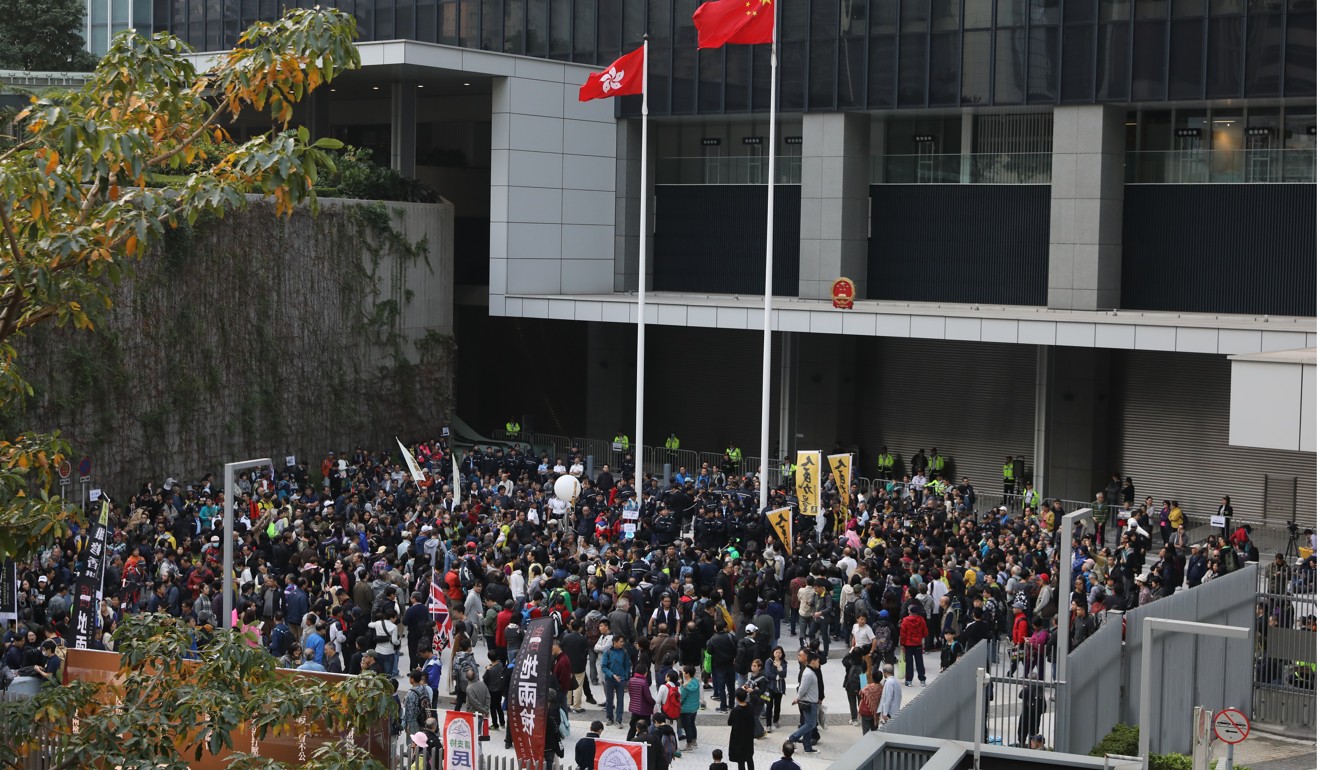
Other themes included opposition to changes to the rule book for the city’s legislature, which protesters fear will enable the Hong Kong government to force through unpopular legislation, including a highly contentious national security law.
They were also protesting against what they described as the political persecution of Occupy leaders, social injustices, urban planning without consultation and the monopolies held by some big corporations.
Hong Kong Bar Association ‘appalled’ by approval of joint checkpoint plan, saying it ‘irreparably’ breaches Basic Law
Applicants seeking to use the East Wing forecourt for a public assembly must satisfy the government’s list of conditions, ranging from no smoking during the course of an event to participants having to clean up the area at an event’s conclusion.
One condition states that “participants shall not stand or place any items on the flagstaff platform inside the East Wing Forecourt” during the course of the event.
It’s not Hong Kong people ruling Hong Kong with a high degree of autonomy now
“If you carry us away, it will be common assault. All the media are watching,” one protester said.
A government spokesman expressed regret over the stand-off at the forecourt, noting the area had been “reopened for public meetings during the specified opening hours subject to an application and approval process”.
“The people concerned should abide by the law and the relevant rules for users and refrain from posing danger to oneself or other people,” he said.
Localist politician Gary Fan Kwok-wai, of the NeoDemocrats, joined the march as a member of a concern group opposing the checkpoint proposal.
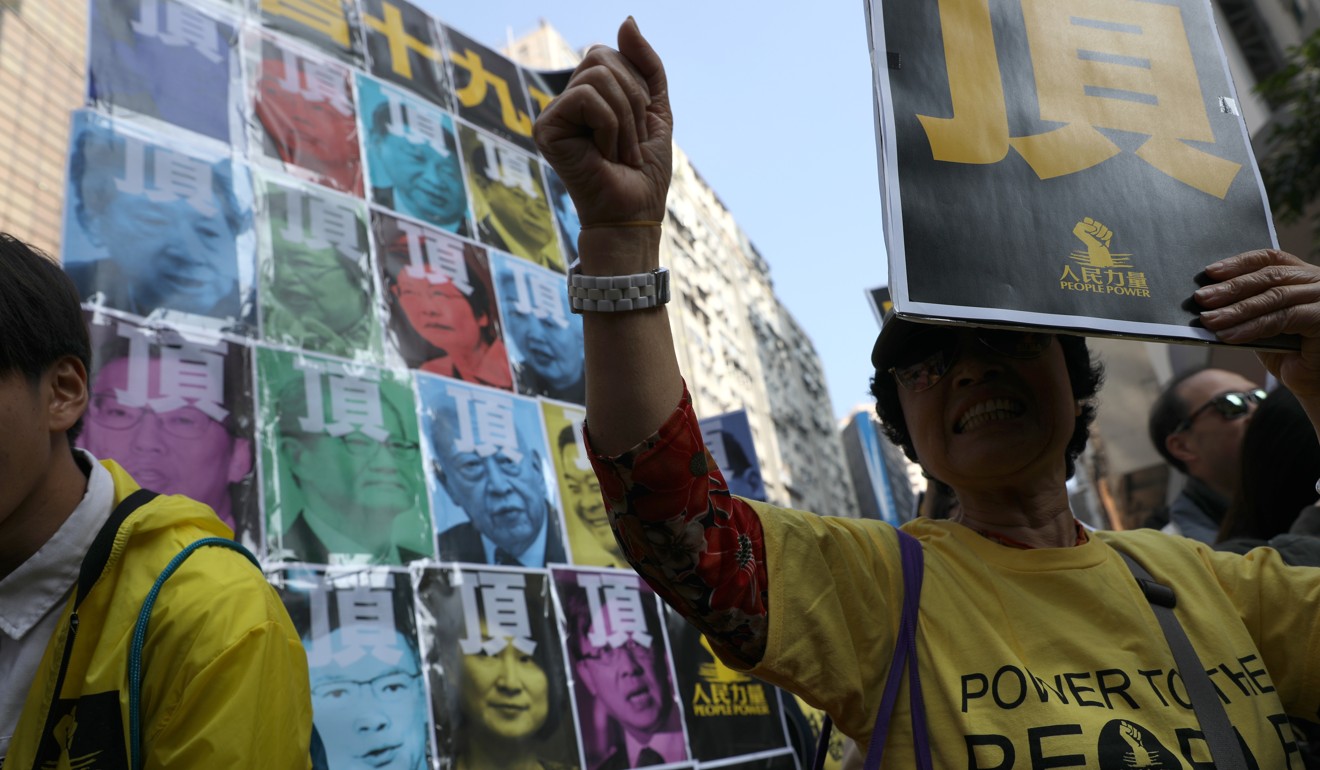
Ivan Wong, 11, and his mother, Shirley Ma, a 47-year-old office worker, were among those opposing the co-location plan.
Protesters face hitting the buffers at Hong Kong rail terminus
Satomi Cheng Lai-ni, a 50-year-old office worker, was also worried about the co-location problem, and expressed disappointment over low turnouts at recent protests.
“I understand that citizens feel powerless, but if we don’t come out the government will be able to say we are just a minority and ignore us,” Cheng said.

“It will deprive the council of its power and have a very serious impact,” Heung said. “The pro-establishment lawmakers will be able to control the council and do what they like.”
Cooperation should be the rule in Legco
The government issued a statement on Monday saying it respected freedom of expression and the right to protest, but it urged participants to abide by the rules in using “Civic Square” to avoid accidents.

The spokesman said there was a sound legal basis for the rail checkpoint plan and appealed to various sectors to “understand the co-location arrangement and related matters objectively, pragmatically and comprehensively”.
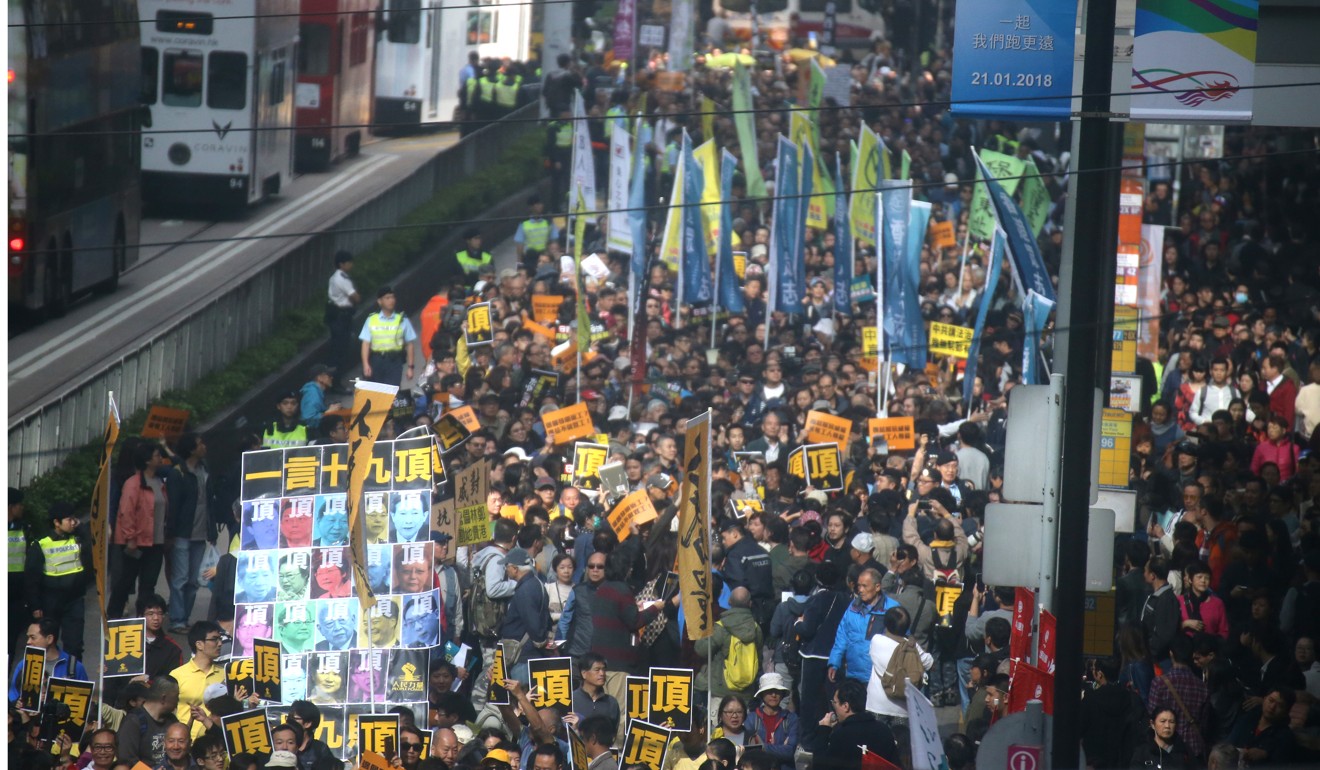
The turnout for the New Year’s Day march, an annual event, has been relatively small in the last two years, at 9,100 last year and 4,000 in 2016, according to the Civil Human Rights Front. Police meanwhile estimated the turnout at 4,800 and 1,600 in 2017 and 2016 respectively.
The 2013 march saw the biggest turnout in recent years, with the front claiming some 130,000 people took part, while police said the number was about 26,000.
Additional reporting by Ng Kang-chung and Peace Chiu

